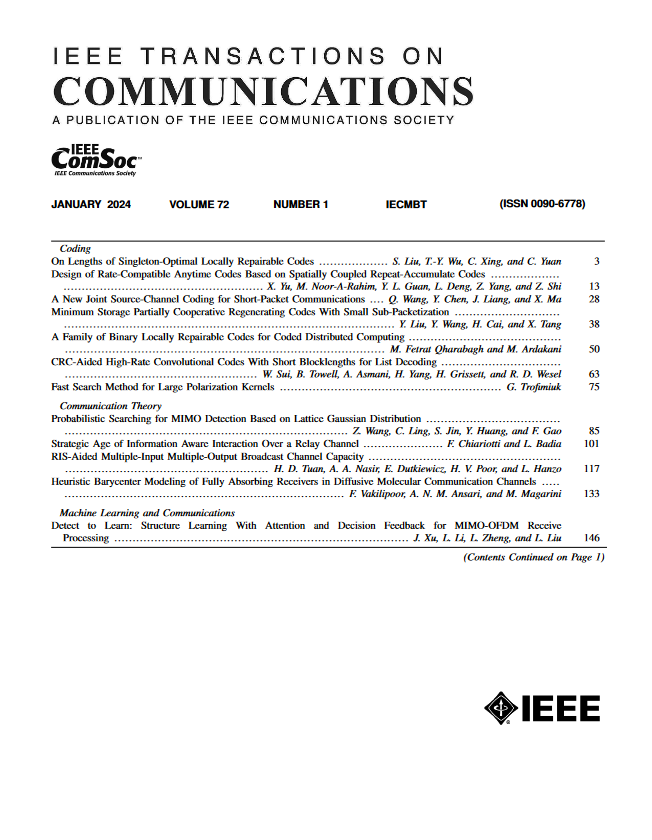海量通道SIMO系统星座优化与能量差检测
IF 8.3
2区 计算机科学
Q1 ENGINEERING, ELECTRICAL & ELECTRONIC
引用次数: 0
摘要
非相干单输入多输出(SIMO)系统与有限数量的接收天线之间存在严重的交叉产品相互干扰,严重限制了上行链路中可以同时服务的用户数量。在实时信道中,针对双频互补幅值信号,提出了一种多用户能量差检测方案。它消除了交叉积干扰,显著减少了基站(BS)所需的天线数量,同时扩展了能量检测(ED)的星座空间。基于该扩展星座空间和信道增益信息,通过最大化最小联合星座距离和直接均衡接收星座空间,得到两个优化的多用户星座。此外,还分析了用户移动性的影响,并设计了一种简单的策略,通过更新移动用户的路径增益来保持性能。仿真结果表明,该方案可以同时处理相同规模天线下的多个用户,同时对用户移动性具有较强的鲁棒性。本文章由计算机程序翻译,如有差异,请以英文原文为准。
Constellation Optimization and Energy Difference Detection in Massive SIMO Systems With Rician Channels
The noncoherent single-input-multiple-output (SIMO) system experiences severe cross-product mutual interference with a limited number of receive antennas, severely limiting the number of simultaneous users that can be served in the uplink. In Rician channel, a multiuser energy difference detection (EDD) scheme is introduced for dual-frequency complementary amplitude signals. It eliminates cross-product interference, significantly reducing the number of antennas required by the base station (BS), while extending the constellation space for energy detection (ED). Based on this extended constellation space and channel gain information, two optimized multiuser constellations are obtained by maximizing the minimum joint constellation distance and directly equalizing the receive constellation space. Additionally, the impacts of user mobility are analyzed, and a simple strategy is designed to maintain performance by updating the moving user’s path gain. Simulation results show that the proposed scheme can handle more simultaneous users with the same scale antennas, and it also exhibits strong robustness to user mobility at the same time.
求助全文
通过发布文献求助,成功后即可免费获取论文全文。
去求助
来源期刊

IEEE Transactions on Communications
工程技术-电信学
CiteScore
16.10
自引率
8.40%
发文量
528
审稿时长
4.1 months
期刊介绍:
The IEEE Transactions on Communications is dedicated to publishing high-quality manuscripts that showcase advancements in the state-of-the-art of telecommunications. Our scope encompasses all aspects of telecommunications, including telephone, telegraphy, facsimile, and television, facilitated by electromagnetic propagation methods such as radio, wire, aerial, underground, coaxial, and submarine cables, as well as waveguides, communication satellites, and lasers. We cover telecommunications in various settings, including marine, aeronautical, space, and fixed station services, addressing topics such as repeaters, radio relaying, signal storage, regeneration, error detection and correction, multiplexing, carrier techniques, communication switching systems, data communications, and communication theory. Join us in advancing the field of telecommunications through groundbreaking research and innovation.
 求助内容:
求助内容: 应助结果提醒方式:
应助结果提醒方式:


